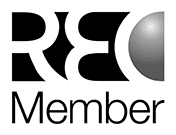The beauty industry has always been a space where innovation meets investment, and in 2024, mergers and acquisitions (M&A) played a crucial role in shaping the future of the sector. While expectations were high for a surge in major deals, the reality was more measured. Instead of an all-out buying spree, businesses took a more strategic approach, focusing on brands that offered strong consumer loyalty, innovative product development, and growth potential in key market segments.
From luxury skincare to DIY beauty, this year’s acquisitions have reflected both shifting consumer preferences and the economic challenges facing the industry. As major players looked for opportunities to strengthen their portfolios, several brands became the subject of highly sought-after deals. So, which brands were at the centre of this year’s biggest moves, and what does it tell us about where the beauty market is heading?
The Most Significant Beauty Acquisitions of 2024
One of the standout deals this year was Puig’s acquisition of Dr. Barbara Sturm, the German premium skincare brand celebrated for its high-performance, science-backed products. Known for its cult-status skincare, the brand has built a strong following among consumers looking for clinically advanced solutions with a luxury appeal. Puig’s investment is a clear indicator that high-end skincare brands with a strong scientific foundation remain incredibly valuable in the M&A space (Vogue Business).
Another major move came from an unexpected player—Bic, the global brand best known for stationery and razors, entered the beauty accessories market by acquiring Tangle Teezer for €200 million. Tangle Teezer has been a household name for years, offering innovative hairbrush designs that are both practical and widely popular. The acquisition represents a strategic step for Bic, expanding its beauty footprint beyond grooming products and into the growing demand for premium haircare tools (Vogue Business).
Meanwhile, L’Oréal made headlines with its decision to acquire a 10% stake in Galderma, a dermatology company specialising in anti-wrinkle injectables. The move marks L’Oréal’s re-entry into the aesthetics sector after a decade-long hiatus, suggesting that the global beauty giant sees significant potential in medical-grade skincare and cosmetic procedures. With consumer interest in injectables and skin treatments at an all-time high, this investment positions L’Oréal to regain influence in a rapidly expanding market (Financial Times).
The DIY beauty trend also played a role in this year’s M&A activity. Helen of Troy, the company behind Hydroflask, expanded its portfolio by acquiring Olive & June, a brand that has truly changed at-home manicures with salon-quality products. As consumers continue to look for affordable, convenient beauty solutions, this acquisition signals a broader shift towards brands that empower customers to achieve professional results at home (Business of Fashion).
What’s Driving These Mergers and Acquisitions?
While each deal had its own motivations, several overarching themes have influenced the M&A landscape in 2024.
Firstly, market saturation has meant that companies are becoming more selective in their acquisitions. The beauty sector is flooded with new brands every year, making it difficult for emerging players to stand out. Instead of buying up any business with potential, investors are targeting brands that have already proven their staying power with strong customer loyalty and consistent sales. This cautious approach was particularly evident in the reluctance of some conglomerates to overextend themselves on acquisitions during uncertain economic conditions (Business of Fashion).
Another key driver has been consumer demand for innovation. Brands that offer something unique—whether through cutting-edge skincare formulations, sustainable packaging, or a hybrid approach to beauty and wellness—have been the most attractive targets. Investors are no longer interested in businesses that simply offer more of the same; they want companies that are leading the next wave of beauty trends. Whether it’s Dr. Barbara Sturm’s clinically tested products or Tangle Teezer’s ergonomic brush designs, acquisitions in 2024 have reflected a push for brands that differentiate themselves in a crowded market (GCIMagazine).
At the same time, economic uncertainty has shaped the way beauty companies are approaching acquisitions. The cost-of-living crisis and fluctuating consumer spending habits have meant that big brands are being more conservative in their deal-making. Instead of taking risks on unproven startups, businesses are investing in brands with a track record of profitability and long-term growth potential (Vogue Business).
What Do These Deals Mean for the Beauty Industry?
The biggest takeaway from this year’s M&A activity is that strategic, carefully considered acquisitions are the new norm. Companies are no longer throwing money at the latest trends or influencer-led brands that may fizzle out in a few years. Instead, the focus is on businesses that have a strong foundation, a unique value proposition, and the ability to evolve with the market.
Luxury skincare remains a key growth area, with investments in high-performance, science-driven brands proving to be a safe bet. At the same time, beauty accessories and DIY solutions are seeing increased attention, reflecting consumers’ interest in affordable, at-home alternatives to salon treatments.
Looking ahead, we can expect further consolidation as brands seek to refine their portfolios, prioritising businesses that align with consumer expectations and long-term industry trends. Whether through high-end skincare, aesthetic treatments, or innovative beauty tools, the M&A landscape will continue to evolve, shaping the future of beauty for years to come.
#BeautyIndustry #MergersAndAcquisitions #Puig #DrBarbaraSturm #Bic #TangleTeezer #LOréal #Galderma #HelenOfTroy #OliveAndJune #BusinessOfBeauty

How Luxury Beauty is Evolving in 2025 with High-End Brands Leading the Way

How AI is Redefining the Beauty Industry in 2025



